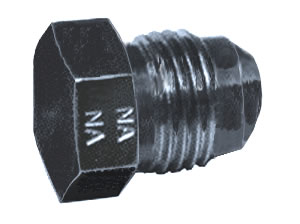
When shopping for aerospace fasteners, you may come across pressure plugs. They are commonly used in the construction of airplanes. Whether narrow body or wide body, countless airplanes have pressure plugs. To learn more about pressure plugs and how they work, keep reading.
What Are Pressure Plugs?
Also known as threaded plugs, pressure plugs are heavy-duty fasteners that are designed to seal a pressurized threaded hole. They can withstand pressure without moving, loosening or otherwise failing.
Pressure plugs are exactly what they sound like: plugs that seal a pressurized passage. They feature external threading that allows them to fit inside of threaded a hole. Even when exposed to pressurized gas or fluid, they will seal the respective hole so that it doesn’t leak.
How Pressure Plugs Work
While they may look like ordinary, albeit short, threaded fasteners, pressure plugs are unique. Traditional threaded fasteners are only designed to hold multiple parts together. When placed inside of a pressurized passage, they won’t seal it. Only pressure plugs are designed to seal a pressurized passage.
You can use a pressure plug by twisting it into a threaded hole. As shown in the photo above, they are relatively short. Nonetheless, after twisting the pressure plug all the way into the threaded hole, it will seal it. The pressure plug will then protect the hole from leaking.
Most pressure plugs are made of steel. Steel is a strong alloy that’s capable of withstanding pressurized gas or fluid. You can find them in other metals and alloys, but steel is the most common material in which pressure plugs are made.
How Airplanes Use Pressure Plugs
Pressure plugs are commonly used to seal oil passages in airplanes. Airplanes require oil just like automotive vehicles. Oil is a lubricant that reduces friction while subsequently protecting the airplane’s mechanical parts from damage. When heated, though, oil will expand. And as oil expansion, it will become pressurized. Pressure plugs can seal oil passages in airplanes so that they don’t leak.
In addition to oil, airplanes often have other heated and pressurized fluids. Some airplanes have coolant, for instance. Coolant will expand as it collects heat from engines or other equipment. To seal a coolant passage, a pressure plug may be used.
In Conclusion
Pressure plugs aren’t ordinary threaded fasteners. While they feature external threading, they are designed specifically to seal pressurized passages. Pressure plugs are inserted into threaded holes, such as oil or coolant passages, at which point they’ll protect against leaks.



